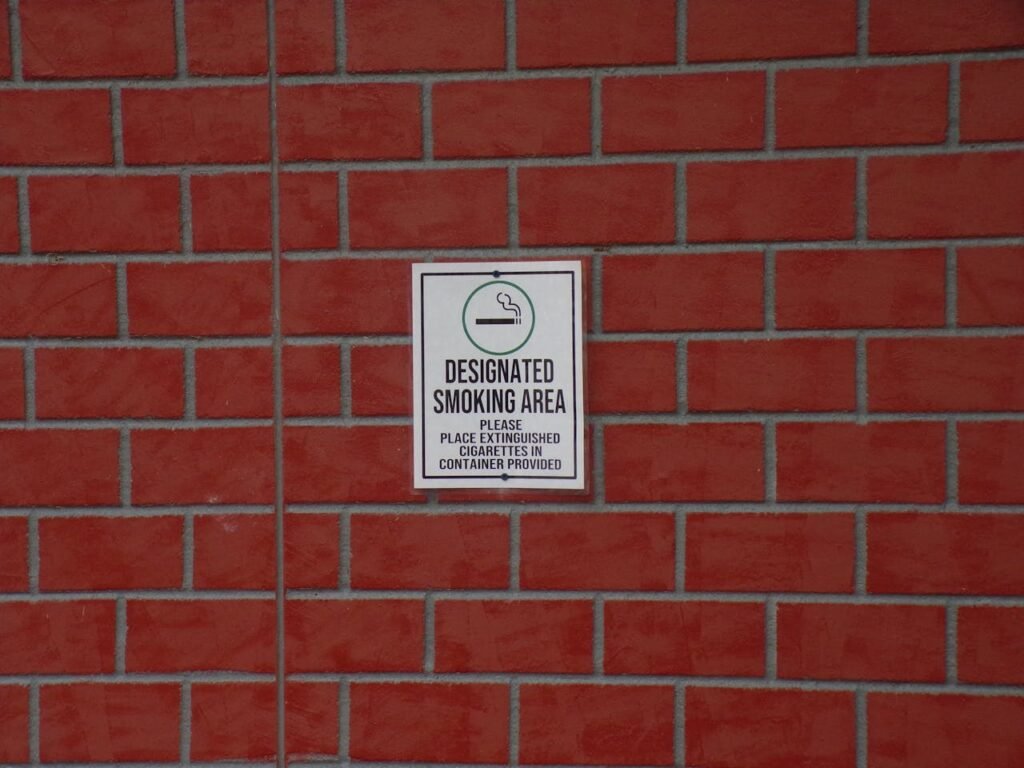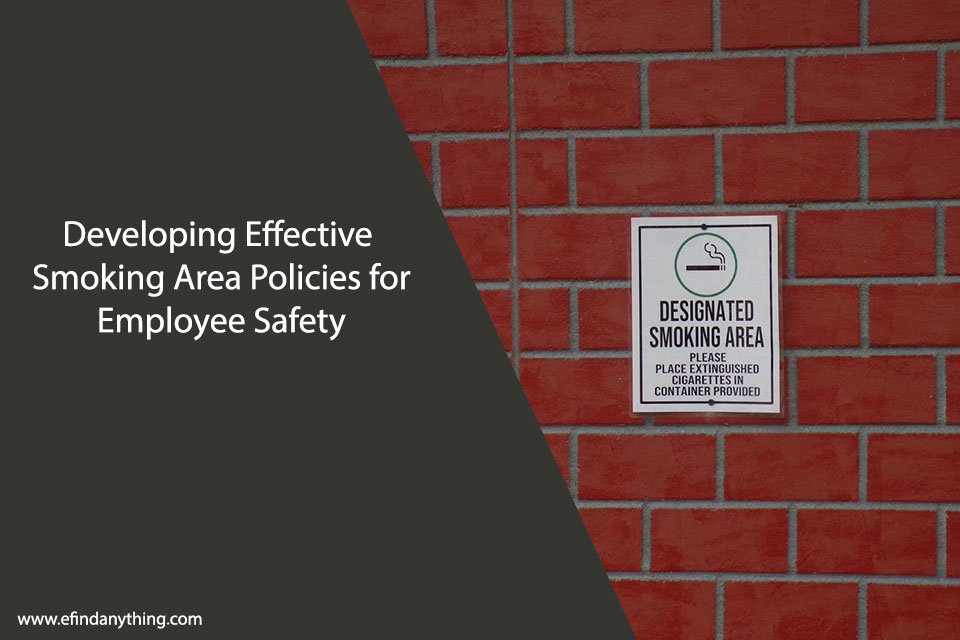
Don’t know where to start with your employee smoking area policies? Let us help.
You need smoke-free laws in the workplace. With a shocking 19.9% of nonsmoking workers still reporting secondhand smoke exposure at work, employee smoking area policies are more important than ever.
But here’s the problem:
Employers often think having a designated smoking area is enough. But without proper policies in place, you’re risking employee health and opening yourself up to liability. In fact, research found that workers with a designated smoking area had 2.9 times the odds of exposure to secondhand smoke than those at smoke-free worksites.
The importance of a safe smoking area for your employees can’t be overstated. Done correctly, you can protect your staff, lower insurance premiums, and build a healthier workplace for all employees. Whether employees are using select smokes to supply their work breaks or any other provider, having proper policies and designated smoking areas in place are beneficial to companies.
What You’ll Learn:
- Important Legal Requirements & Liability Risks
- Important Parts of Successful Smoking Area Policies
- How to Design Safe Smoking Areas for Employees
- Strategies for Successful Implementation
- Best Practices for Monitoring Compliance
Important Legal Requirements & Liability Risks
Here’s the biggest thing most employers don’t know about smoking policies…
Employers have major liability for secondhand smoke exposure. These liabilities can come from workers’ compensation claims, disability lawsuits, safety violations, and more.
The specific laws on smoking in the workplace vary by state, but the direction is clear. Jurisdictions across the U.S. are expanding comprehensive smoke-free laws. Employers who lag behind could face fines, legal claims, and increased liability.
In California for example, penalties include fines of up to $70,000 for employers who commit a willful serious violation related to workplace smoking policies. Businesses with smoke-free policies have reported real savings. Businesses have seen 25-30% reductions in fire insurance costs when they implement comprehensive smoking restrictions.
Liability risks include:
- Workers’ compensation claims from secondhand smoke exposure
- Federal and state disability law violations
- Failure to provide safe workplace
- Increased insurance premiums
- OSHA citations and fines
Waiting until a problem arises isn’t the best strategy. Smart employers plan ahead and mitigate these issues before they happen.
Important Parts of Successful Smoking Area Policies
Successful smoking area policies have common elements. Blanket policies are ineffective. You need specific details for each key component that everyone understands.
Your policy needs to include:
Strictly limited to designated smoking areas. Allowing smoking anywhere else on company property is a serious health and safety risk. This includes parking lots, building entrances, and common areas. Smoking should only be allowed in the designated smoking area.
Ventilation requirements. Smoking areas must have adequate ventilation to prevent smoke from spreading into other areas of the building. Proper ventilation is essential for any designated smoking area to be effective.
Distance from building entrances. Effective policies often require the smoking area to be at least 25 feet from all building entrances, windows, and air intake systems. This minimizes smoke drifting into the workplace.
Clear signage requirements. Obvious “No Smoking” signs should be posted at building entrances and throughout the workplace. Your designated smoking area should also be clearly marked.
Consequences for policy violations. The policy must clearly outline consequences for employees who violate the rules. Without consequences, even the best policies will fail.
The key is being very specific. Vague policies lead to confusion and compliance problems.
How to Design Safe Smoking Areas for Employees
The biggest mistake most companies make when it comes to smoking areas…
They just set aside any outdoor space. This is wrong. Effective smoking areas need proper design and consideration to really protect your non-smoking employees.
Location matters. The smoking area should be as far from the building entrance, windows, and air conditioning intakes as possible. Wind patterns also play a role. Don’t want smoke blowing back toward the building or outdoor work areas.
Provide the right amenities. Weatherproof seating, ash receptacles, and garbage containers for cigarette disposal all help. Comfortable, functional smoking areas mean more compliance from your employees.
Consider air quality monitoring. Employers use air quality sensors near smoking areas to track whether they are impacting indoor air quality. This gives you data to show your policies work.
Maintenance is key. Regular cleaning and upkeep of the smoking area prevents it from becoming an eyesore or fire hazard. Overflowing ash receptacles and litter create problems.
You need to consider your workplace’s unique layout. An office building’s smoking area will look very different from a manufacturing facility’s. Customize your approach to your specific needs.
Strategies for Successful Implementation
New smoking policies can’t just be emailed to employees and expected to work. Success requires planning, communication, and ongoing support.
Begin with clear communication. Help employees understand the reasons behind the policies. Policies that protect employee health are better received.
Give employees time to transition. Don’t impose strict policies overnight. Give employees time to adjust and ask questions. Slow rollout minimizes resistance and confusion.
Train your supervisors and managers. Make sure your leadership team understands the policies so they can answer questions and enforce them properly. Inconsistent enforcement kills policy effectiveness.
Provide smoking cessation support. Employees may see the policies as motivation to quit entirely. Resources and support programs show you care about their health.
Address concerns quickly. When employees have questions or problems with new policies, respond promptly. Small issues quickly become big problems if ignored.
Remember, culture change doesn’t happen overnight. Stick with your policies even if there’s some initial resistance.
Best Practices for Monitoring Compliance
The truth about smoking area policies…
Creating them is the easy part. Making sure they work and are effective takes ongoing monitoring and attention.
Regularly review and update policies. Laws change and policies need updates. Schedule annual reviews of your policies for continued compliance and effectiveness.
Document any policy violations and responses. Keep a record of violations and how you respond. This is important legally and to help identify problem areas.
Get regular employee feedback. Employee surveys can help identify issues you may not be aware of. Employees are often the first to know about problems.
Perform air quality testing as needed. Periodic air quality testing ensures that the designated smoking areas aren’t affecting indoor air quality. The data supports your policies and identifies needed changes.
Update training materials as needed. When policies change or new employees come onboard, provide training so everyone knows the rules. Knowledge gaps lead to compliance problems.
Bottom Line Results
Effective smoking area policies are critical to protect your employees, reduce legal risk, and create a healthier workplace. Statistics show that 76% of blue collar workers experienced a reduction in secondhand smoke exposure at work when comprehensive smoke-free policies were implemented.
The results are clear:
- Lower insurance premiums and liability risk
- Healthier, more productive employees
- Better compliance with health and safety regulations
- Improved company reputation and employee satisfaction
Don’t wait for problems to force your hand. Develop comprehensive smoking area policies now, implement them well, and monitor compliance. Your employees’ health and your company’s bottom line are at stake.
The best smoking area policies strike the right balance between employee needs and health/safety requirements. With the right planning, communication, and enforcement, you can create smoking area policies that work and keep everyone safe.
